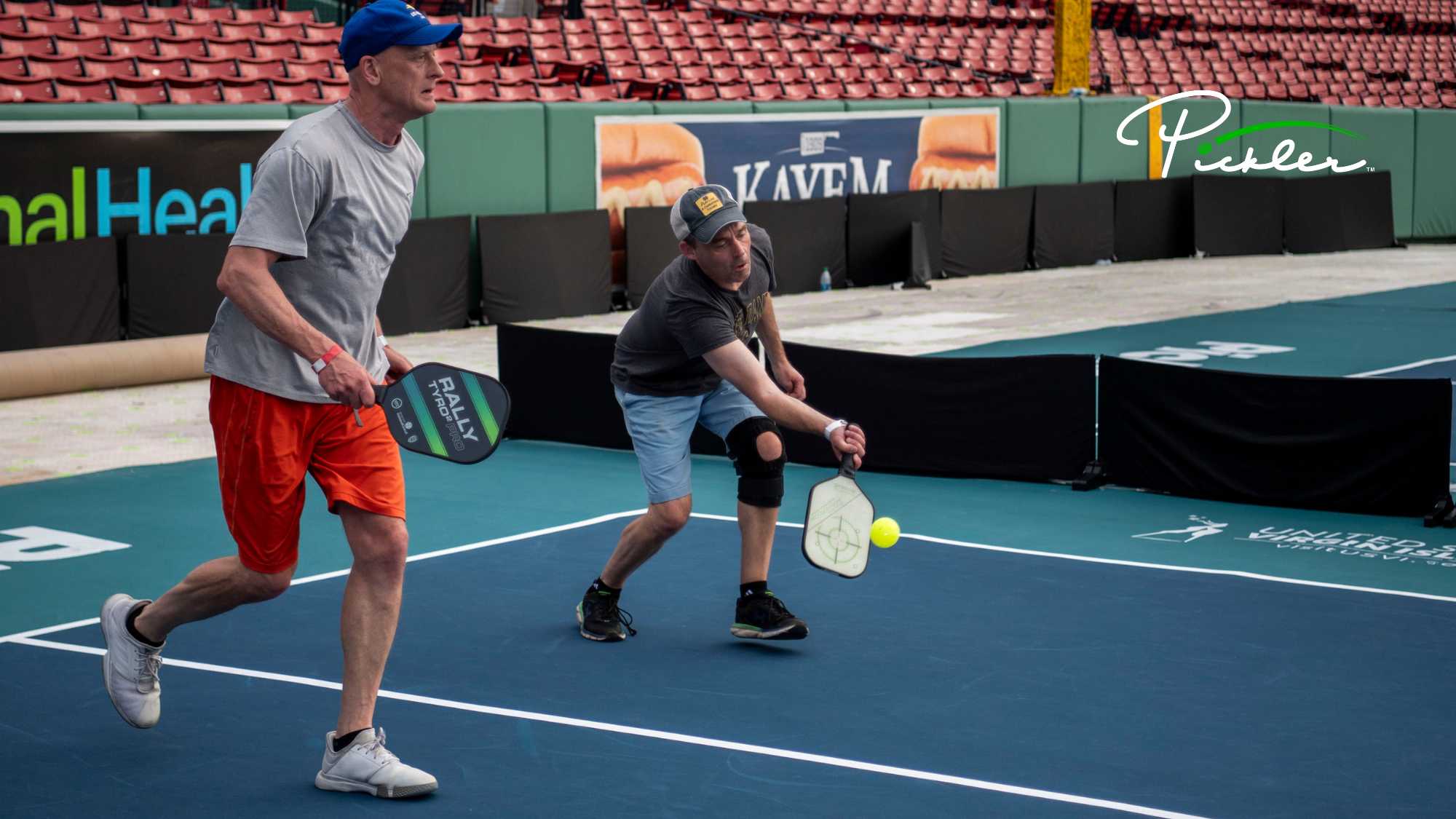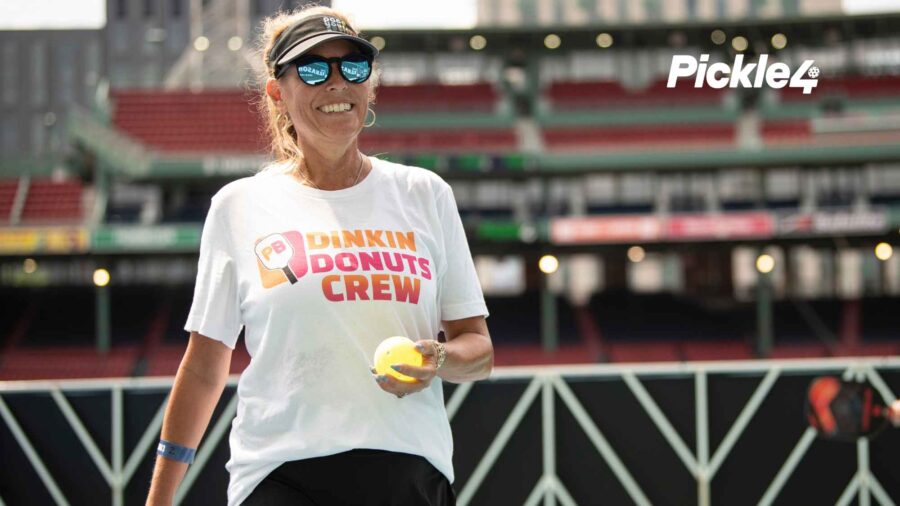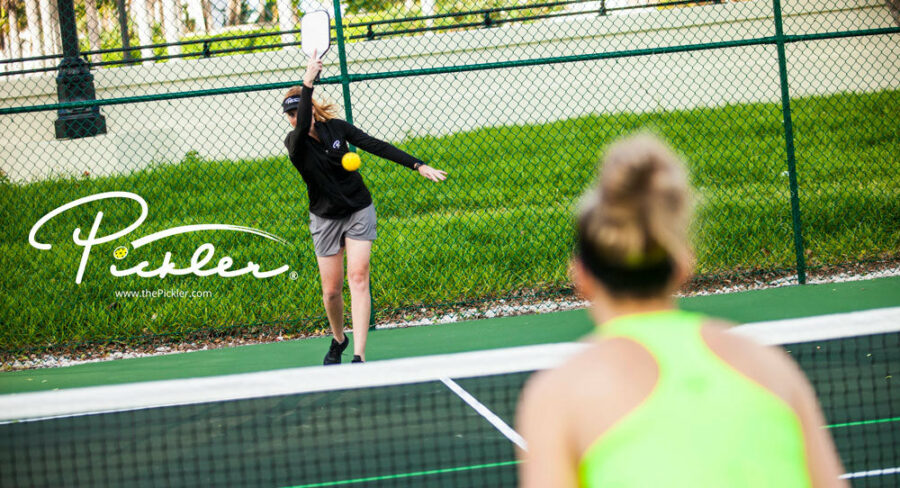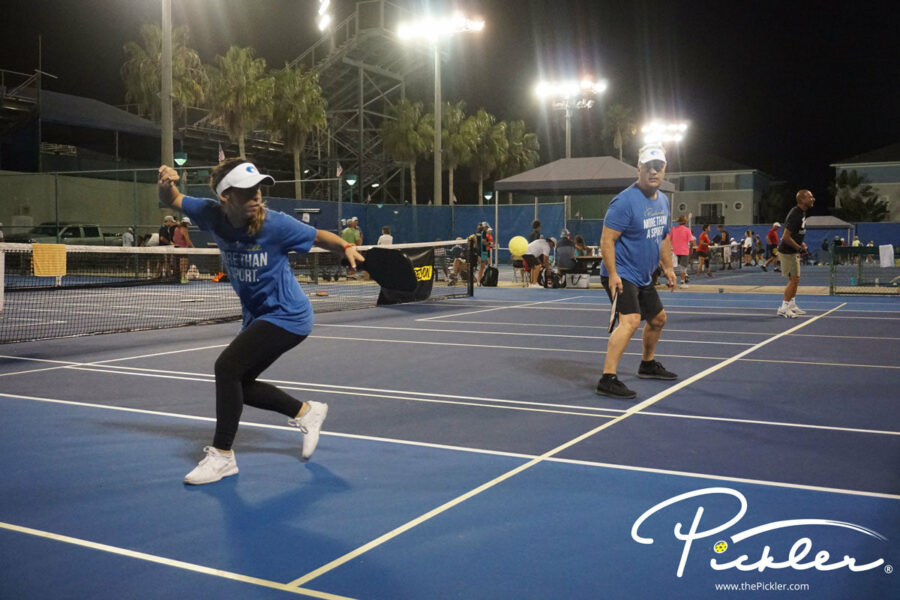“No Man’s Land”—also called the Transition Area—is the area of the pickleball court in between the Non-Volley Zone and the baseline. It is generally a foot or two behind the Non-Volley Zone (also known as the Kitchen), to a foot or two in front of the baseline.
This area is aptly named “No Man’s Land” because it is generally a place that pickleball players try to avoid, as it is difficult to win points by playing in this area of the pickleball court. It is one of the most difficult places to be on the pickleball court because your opponents are able to hit the pickleball down at your feet. These low shots at your feet are difficult for you to return, as these shots cause you to have to get low and hit up on the pickleball in order to return it. As a result, it is more likely to result in a put away shot for your opponents.
This area is also aptly called the Transition Area, as it is the space where you transition from the baseline for the start of a rally, to the preferred space of the Non-Volley Zone or Kitchen—as most pickleball rallies and points are won when playing at the Non-Volley Zone Line. Statistically speaking, a player’s or team’s chances of winning the rally or point go up exponentially when he, she, or they can move in to the Kitchen Line, so it is incredibly important to transition through the Transition Area to the Kitchen Line.
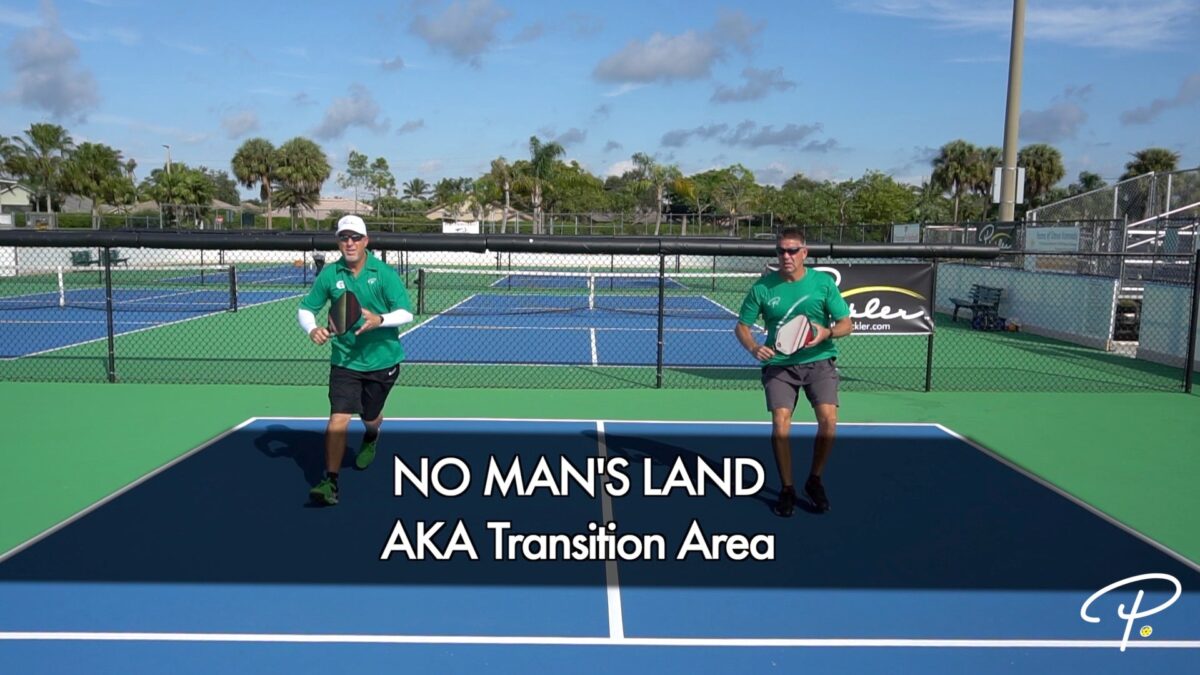
Since many players view the Transition Area as a place to avoid, it’s common to see mistakes and unforced errors occur in this zone. Oftentimes, the player or team that is better in transition will be the deciding factor between a win and a loss. Avoid these common mistakes to turn “No Man’s Land” into an “Opportunity Zone.”
1. Rushing to the Kitchen Line – As most points are won at the Kitchen line and the Transition Area is a place pickleball players often want to avoid, players make the mistake of trying to rush up to the kitchen line. While it is imperative to move to the Kitchen line as soon as possible, moving too quickly through the Transition Area leads players to make errors. When moving from the baseline to the Kitchen line, stay in control. Move through “No Man’s Land” with purpose. To reduce errors, split step or split stop immediately before your opponents hit the pickleball so you can react to the pickleball and then hit your shot from a controlled position.
2. Lack of Paddle Control – The transition zone is the most difficult area to play on the court, as your opponents are able to target your feet and you have less time to react to shots from your opponents. With that in mind, when moving through the transition zone, keep your paddle around your waist or even a little lower (as opposed to keeping your paddle up around your chest). This will make it easier—and take less time—to react to those likely low shots from your opponents. Maintain a strong pickleball ready position by having a loose relaxed grip and keeping the pickleball paddle out in front of your body.
3. Hitting Hard Shots – When you hit a hard shot from “No Man’s Land,” you give your opponents an opportunity to hit a strong counterattack or to push you and your partner back in the pickleball court, which can give your opponents control of the Non-Volley Zone. This can put you on the defensive and make it more difficult to win points. Instead, hit soft drop shots or dinks from the Transition Area. This forces your opponents to hit a defensive shot, which can give you and your partner an opportunity to move forward and gain control of the Kitchen. As a result, hitting soft drop shots from “No Man’s Land” can be an effective way to win points because it allows you to control the pace of the game, maintain position on the pickleball court, and set up your team for better opportunities to score points.
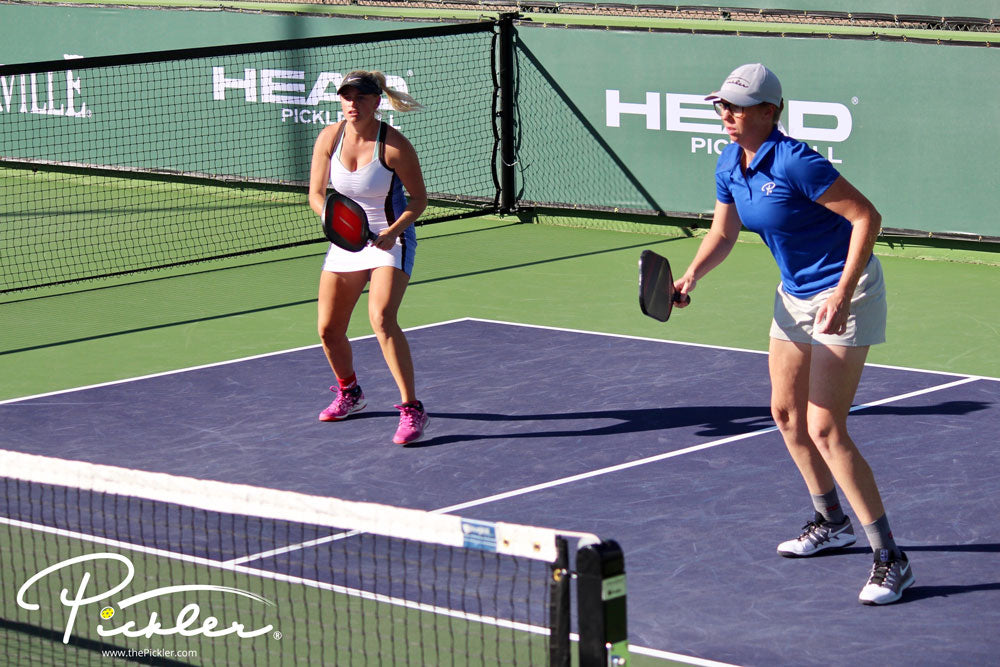
4. Being out of Sync with Your Partner – If pickleball partners move to the Kitchen line at different rates, they can end up at different depths of the pickleball court. This creates more gaps for opponents to hit winning shots. As you move from the baseline to the Kitchen line you want to stay linked with your partner. In other words, you want to be at the same depth on the pickleball court.
5. Standing Tall Stance – When in “No Man’s Land,” it is important to bend your knees and get low. This is especially true when your or your partner’s shot is high. When the ball goes high, get low and be ready for your opponents to hit the pickleball down at your feet. Your defense and reset skills will improve when getting low and bending your knees. Consider having a slightly wider stance with your feet and legs. A wider stance will help you get lower and feel more stable, with more power.
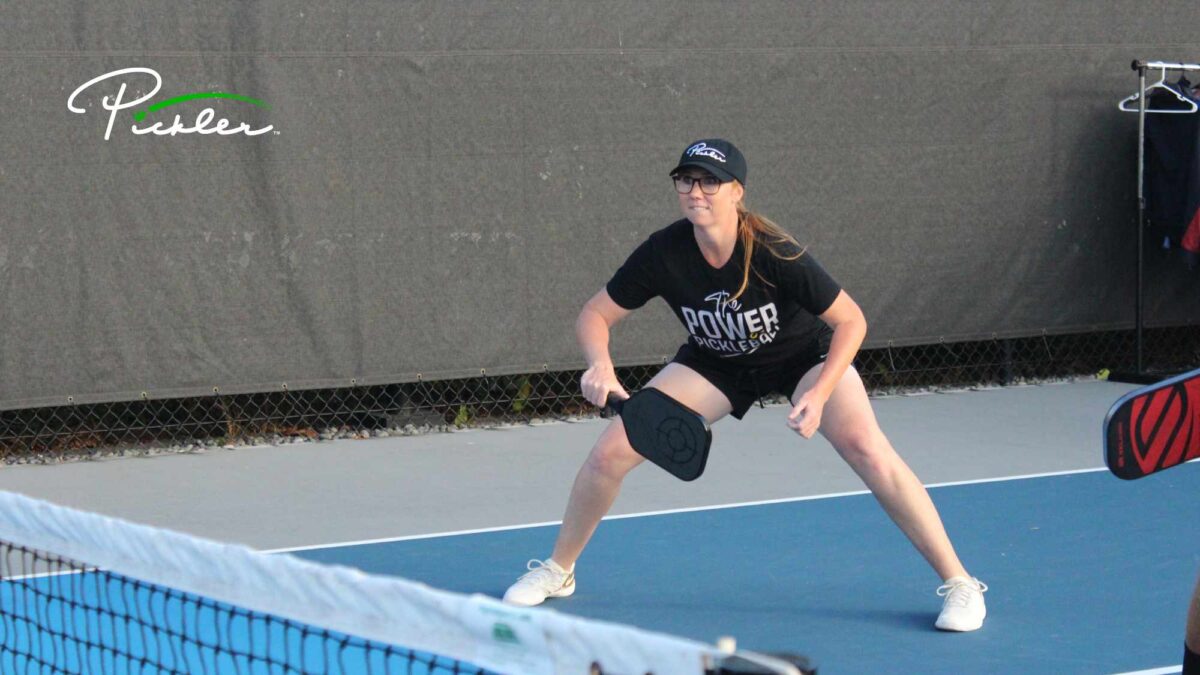
6. Not Taking Advantage of the Transition Area – One of the biggest mistakes made by pickleball players is not taking advantage of the space available in “No Man’s Land.” For instance, imagine that you or your partner popped the pickleball up so that your opponents are able to hit an offensive shot. It may be a good idea to take a step back off of the Non-Volley Zone Line in order to buy yourself a fraction more reaction time, which may give you an edge to dig out your opponents’ put away shot. This step back may also help you better detect the shots that are traveling out of bounds, as you have more time and more room to decipher where the pickleball is going. Be sure to immediately step back into the Kitchen line as your chances of winning the rally increase when hugging the Kitchen line.
7. Don’t Forget to Drill – All too often, pickleball players drill at the Kitchen Line and baseline, but not in between those two. To improve in the Transition Area, practice there! One pickleball drill that you can try is to grab a drill partner and start one of you a couple steps in front of the baseline and the other at the Non-Volley Zone Line. The player in front of the baseline has the goal of resetting every shot into the Kitchen, while the player at the Non-Volley Zone Line has the goal of hitting offensive shots at his opponent’s feet. Be sure to practice both roles, and practice until you are comfortable playing from “No Man’s Land!”
WANT MORE PICKLEBALL TIPS AND STRATEGIES?
Learn 3 pickleball patterns at the kitchen line to win more points!
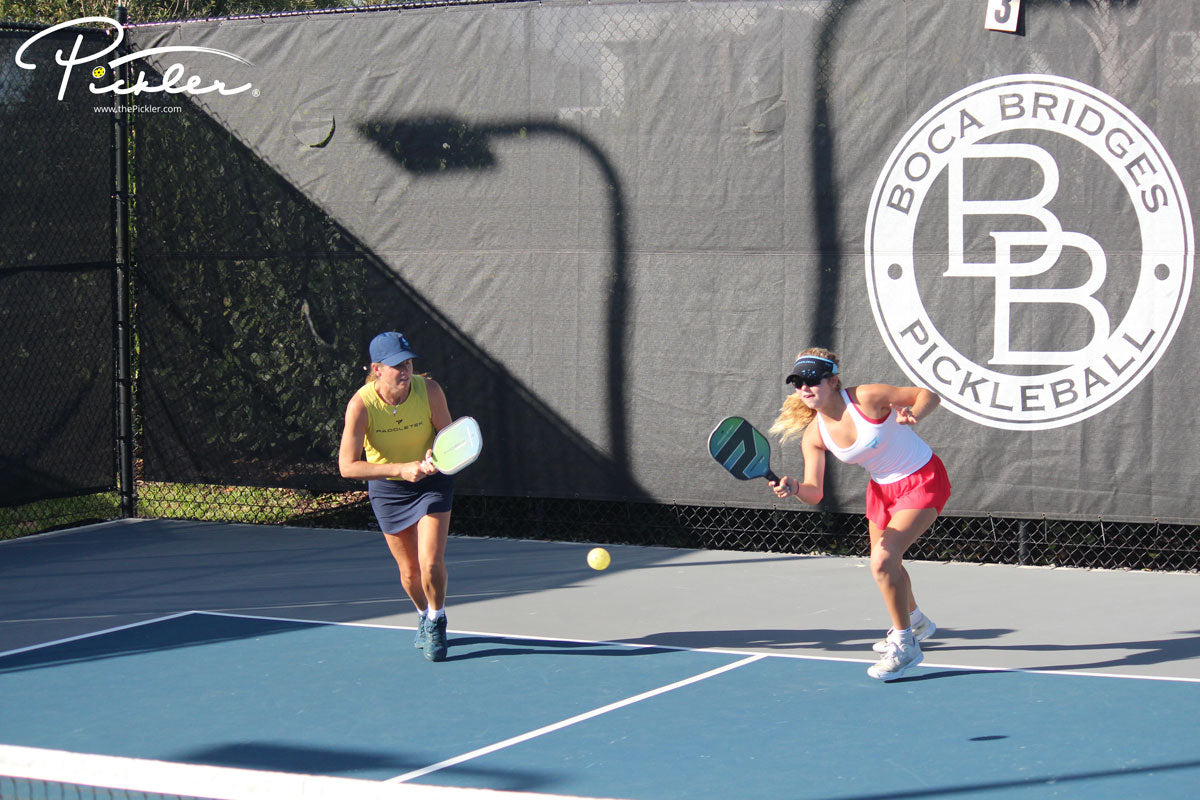
Plus, if you want more pickleball tips and strategies on every aspect of your pickleball game, check out Pickler’s online video lesson collection called My Pro Pickleball Coach. My Pro Pickleball Coach is a fraction of the price of one clinic or even one lesson, and features over 140 video lessons (over 7 hours of instruction!), as well as a corresponding e-book. These online video lessons are available on demand 24/7 and breakdown every aspect of the sport of pickleball, including pickleball drills, strategy, and advanced concepts, so you will play your best pickleball.


